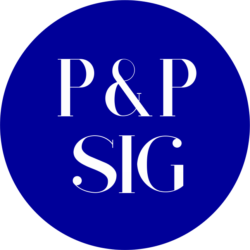Discussion Threads
This is a list of topics on the P&P SIG Discussion List.
You can read the full thread in the discussion list archives.
See the Mail Lists page for instructions.
- “A P&P inquiry for the SIG” on Standard Operating Procedures (August 2014)
- “Use of the second person – you and your” (August 2014)
- “Policy” – Alternative terms (Oct 2014)
- “Policy and Procedures Library Name” (Oct 2014)
- “SOPs vs. other Procedures” (Dec 2014)
- “Q&A on Tech Com for Aerospace” (Dec 2014)
- “Cross Post from STC Lone Writer SIG” on why people do or don’t remain STC members (Jan 2015)
- “Use of video in technical documentation” (Feb 2015)
- “Authorization of policies” (Feb 2015)
- “Good source for defining different levels of P&P?” (Feb 2015)
- “Document Type Definitions?” (April 2015)
- “What volume of information/change can someone absorb in a day?” (April 2015)
- “Use of the second person – you and your” (April 2015)
- “Tools for Policies & Procedures” (May 2015)
- “Taxonomy of documents” (May 2015)
- “Student Requesting Examples of Process Documentation” (June 2015)
- “Policies or related materials on transgender topics” (Junly 2015)
- “Reference Style in Policies?” (Aug 2015)
- “Policy and Procedure Repositories” (Sept 2015)
SOPs and the Technical Writer
Intercom-April 2003; By Mark Edelman; Summary by Maria Christophel (2006)
This article provides a thorough method for writing Standard Operating Procedures (SOPs). It begins with a clear definition of what SOPs are and what they should not be and takes the reader through the structure, the research, authorship, management, professional matters, and concludes stating that writing SOPs is one way for companies to excel. It explains in detail the elements that should be included in the creation of SOPs such as front matter, purpose, scope, definitions, roles and responsibilities, etc. Equally detailed is the list of recommendations for dealing with authorship issues, which writers of SOPs may have to face; the list includes minimizing cross references, using consistent language, testing procedures, etc. The article stresses the importance of managing the sets of SOPs written to achieve quality, and warns the writers to beware of organizational changes as the worst enemy of documented SOPs.
Developing Internal Procedures Online – The HowWe Manuals Project at Suncorp
Proceedings-1996; By Dean Bell and Helen Smith; Summary by Maria Christophel (2006)
This article provides a brief outline of the topics that were covered in the session presented at the SCT Conference. The purpose of the session was to relate activities performed during the various phases of developing internal procedures for online delivery at Suncorp.
Writing Processes and Procedures Using Audience Analysis and the ISO 9000 Document Hierarchy
Proceedings-2000: By Tricia Cunat and Amary Craig; Summary by Maria Christophel (2006)
This article describes the method for writing processes and procedures using as the base a detailed analysis of the audience and the ISO 9000 definition of process vs. procedure. It provides a detailed definition and a comparison between processes and procedures, and provides examples of when using either or both is appropriate. It defines audiences and provides a model matrix for identifying potential audiences in the development of a user manual. In addition, it presents types of formats for delivering processes and procedures to the audience.
Web Delivery of Corporate Policies and Procedures
Proceedings-2001-Jeannete P. Evans; Summary by Maria Christophel (2006)
This article outlines the advantages and disadvantages of delivering policies and procedures through the web. It presents the results of surveys conducted in a company to decide on the selection of the best delivery method to alleviate the old problem of maintaining policies and procedures binders updated. The author presents in a series of tables, the conclusions of research activities, advantages/disadvantages of online delivery, and the results of implementing web delivery.
Transition To Process-Based Policies and Procedures
Proceedings-1997; By Jerri L. Huclayer; Summary by Maria Christophel (2006)
This article describes the old format for writing P&P and indicates the reasons why this format is becoming obsolete. It describes process-based policies as the new format of writing and points out the benefits of using such method. It explains that the new format places more importance on the process rather than who is doing the process.
The Technical Writing Machine- A Model for Teaching Writers How to Develop Troubleshooting Procedures
Proceedings-1997; By Thomas F. Moran; Summary by Maria Christophel (2006)
This article presents The Technical Writing Machine as a model for teaching students to develop troubleshooting procedures. It indicates the reasons for creating the model and the benefits derived by its use. It presents a diagram of the model and explains the flow and its different components. The application of the model produces malfunctions systems for which strategies for problem solving must be written.
Procedures Writing Training in a Corporate Environment
Proceedings-1993; Elizabeth T. Perelli; Summary by Maria Christophel (2006)
This article narrates the activities this author performed with one additional staff to implement a procedures writing training program in a financial company. The article describes the assumptions of the program, the challenges encountered during the process, and the benefits received by all participants in the program.
Placing Policies and Procedures Online – A Practice Approach
Proceedings-1997; By Ronald Robert Kirtland; Summary by Maria Christophel (2006)
The article introduces in br /ief, the lessons learned during the enormous task of updating and converting hard copy documentation to an online environment. It provides a br /ief insight into the phases of the project: analysis, research, development, user testing, and implementation.
